
It is now ubiquitous in bi circles but it took a while to catch on.
The pink, purple and blue colours that have come to represent the bi community in their stripes were not new back in 1998, but refashioning them into a very simple flag was a bright idea from Michael Page of online chat forum BiCafe (a website which ran from 1997 until 2012 – sadly gone).
The USA-based BiCafe website was launched in 1997 and the flag was launched at its first birthday celebrations, on 5 December 1998.
In correspondence with a writer for the flagspot website Michael explained, “The pink colour represents sexual attraction to the same sex only (gay and lesbian), the blue represents sexual attraction to the opposite sex only (straight) and the resultant overlap colour purple represents sexual attraction to both sexes (bi).”
The “correct” bi flag design is made up of three distinct colour blocks, but sometimes people use a wash of colours from pink to blue via purple.
However that’s pretty well in keeping with his original concept, as Michael explained: “The key to understanding the symbolism of the Bisexual pride flag is to know that the purple pixels of colour blend unnoticeably into both the pink and blue, just as in the ‘real world,’ where bi people blend unnoticeably into both the gay / lesbian and straight communities.”
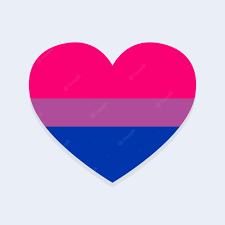
Wouldn’t the rainbow flag do the job?
Michael wrote that “the vast majority of bi people I have spoken with, feel no connection to the rainbow flag, the pink triangle, the black triangle, the Lambda symbol or the double-edged hatchet. These symbols are viewed as gay and lesbian icons, which was their initial intent.”
The recent “progress flag” version of the rainbow flag adds stripes to address marginalisation and exclusion of trans people and people of colour from the rainbow, but leaves bi exclusion as an unaddressed issue.
After its launch the bi flag slowly spread as an image around the bi world, including appearing on the back of the programme booklet for the next International Bisexuality Conference, in 2000.
Despite this, in the late 1990s and 2000s it was still fairly unknown as a symbol in the wider LGBT scene, not least because in the days when colour printing was so much harder to afford, promotional materials for bi events, groups and projects tended to be in black and white.
But the growing internet access helped transform that. Today there are a plethora of web graphics using the three colours, as well as lots of bi-coloured accessories to subtly communicate your bi-ness to others.
The flag itself – now easily obtainable online for a few pounds as a small hand-held flag-on-a-stick or as a five foot long fabric sheet – makes a simple and popular cape to wear at LGBT pride events, turning the usual problem of bisexual invisibility on its head by literally wrapping yourself in the flag.
Over the years since it has flown from town halls worldwide and given us a code by which to know one another, it has helped end bisexual invisibility.
In 2020, it was at the centre of internet controversy over its ownership, which ultimately reaffirmed its place as a freely usable symbol for us all. So all of our thanks to Michael, and happy birthday the pink, purple and blue flag this 5 December.

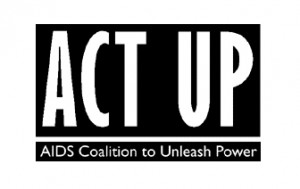
ACT UP Disrupt Mass at St Patrick’s Cathedral, New York
On 10 December 1989, AIDS activist group ACT UP (AIDS Coalition To Unleash Power) undertook one of their most controversial actions. In conjunction with the Women’s Health Action and Mobilization (WHAM!), they picketed outside St Patrick’s Cathedral but also took direct action inside.

The protesters had given advance notice of their intentions, which prompted a range of responses from authorities. The most drastic was having sniffer dogs sweep the Cathedral for explosives earlier in the day. Hundreds of uniformed police officers were assembled outside and plain clothes police officers mingled with the congregation inside.
Some 4,500 protesters gathered outside, some of them lying down in the street to block traffic on Fifth Avenue. Others carried a giant condom with the words “Cardinal O’Condom” written along the side. This was a reference to Cardinal John O’Connor who, in addition to his homophobic, anti-condom and anti-abortion preaching, was also a staunch opponent of sex education in schools.
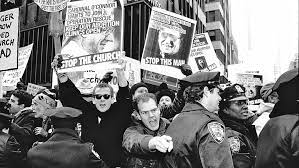
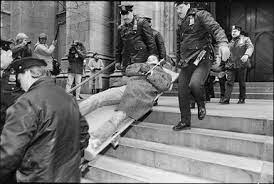
The protesters also included artist Ray Navarro dressed as Jesus, supposedly covering the event for “the Fire and Brimstone Network”.
But it was events inside the Cathedral that proved the most controversial. It began with activists pretending to be ushers and handing out flyers to those entering the church, explaining why there would be a protest. Then, as O’Connor began to take Mass, activists lay down in the aisles or chained themselves to the pews. More activists stood up in the pews and shouted things like “Why are you murdering us?” and “Stop the Madness!”
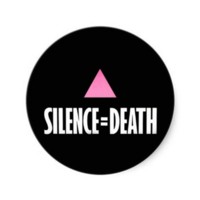
O’Connor, hoping to drown out the protests, asked the congregation to stand and pray. Activists merely shouted louder and started blowing whistles. Police and church heavies moved in to carry the protesters out. The majority had to be carried out on stretchers as they refused to get up from the floor of the aisle.
But even when this group of activists had been removed, there were still others inside, sitting quietly and pretending to be worshippers. These were the so-called ‘Speaking in Tongues’ group. Their strategy was to wait until Communion, then walk up as if to receive Communion. When they were offered the Communion wafer they would each make their own political statement.
The first member to do this was Tom Keane. The priest gave him the wafer and said, “This is the body of Christ.” Keane responded by saying “Opposing safe-sex education is murder.” He then laid on the floor himself in an attempt to prevent others from receiving Communion. The priest simply stepped over him and continued giving Communion.
Keane was one of 111 people arrested inside and outside the Cathedral. Ultimately, all of the protesters were charged with minor offences and given community sentences. Those who refused to undertake community service were tried but did not serve time in jail.

Good for the priest who stepped over the protester and continued to do what he was there for!
I’m not saying that the church is perfect. Far from it, but there’s a time and place to more maturely make your very valid point.
LikeLike
Fascinating information that has educated me a little more on LGBTQ+ issues. Thanks
LikeLike